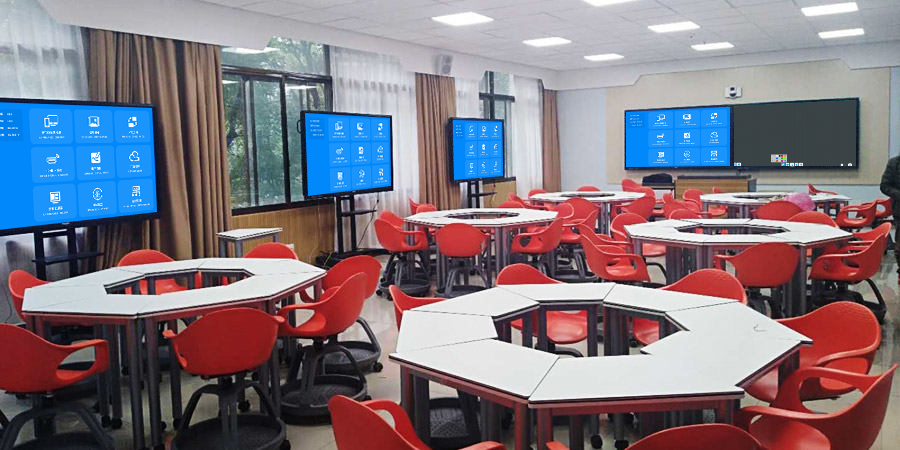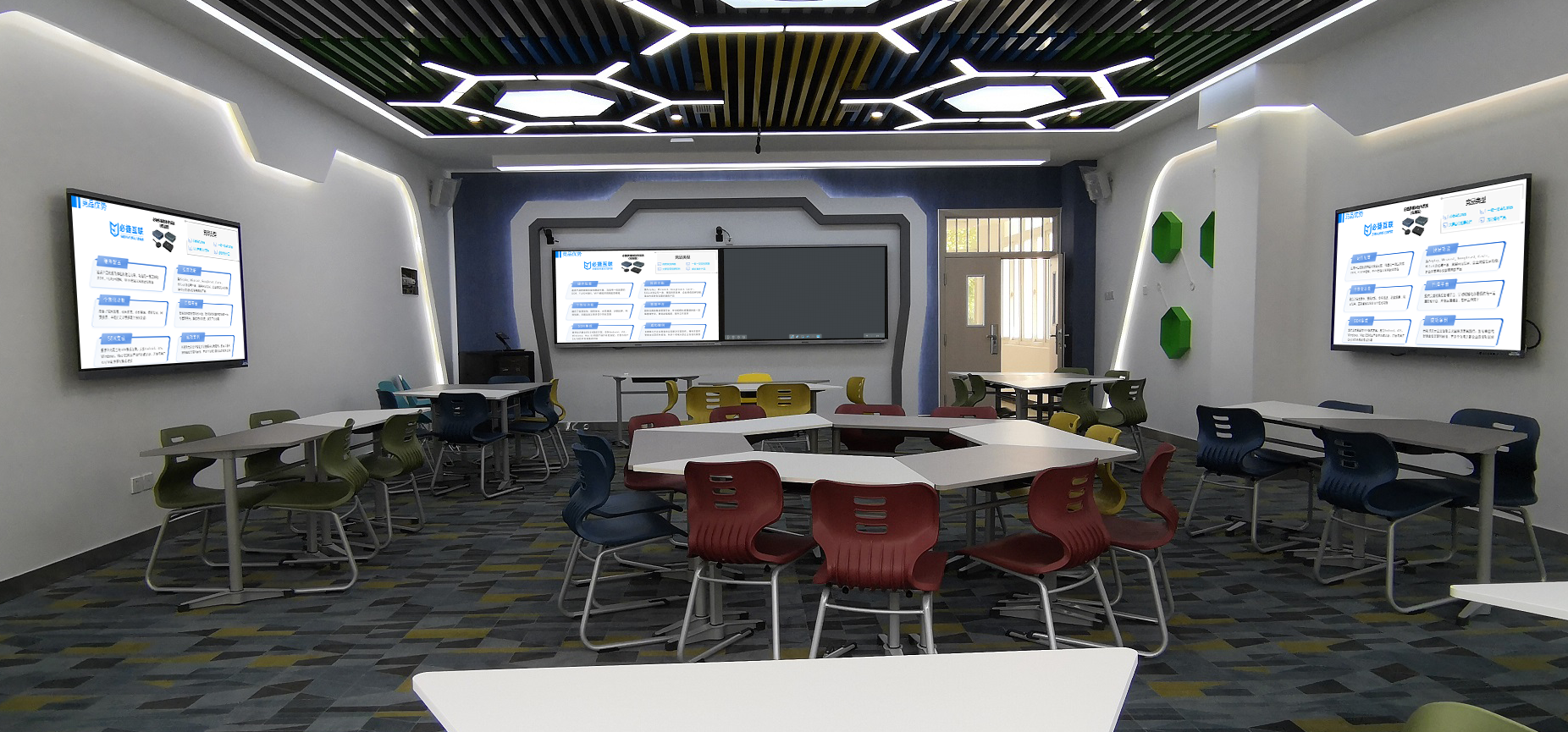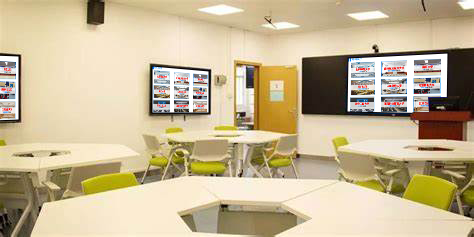Smart Classrooms: Transforming Teaching from One-Way Transmission to Two-Way Resonance
Smart classrooms are redefining the educational landscape through technology, shifting traditional “teacher lectures, students listen” to “all-inclusive participation, real-time interaction.” This makes knowledge transfer more efficient and brainstorming more vibrant.
I. All-Device Interconnection: Breaking Down Educational Information Barriers
(I) Borderless Wireless Screen Mirroring
Devices like phones, computers, and tablets can wirelessly connect to the classroom’s main screen and group screens. Teachers can cast courseware with one tap, and students can upload assignments in real-time. Supporting iOS, Android, and Windows systems, 8 groups of devices in a 60-person classroom can mirror simultaneously, with display switching taking only 1 second, eliminating time wasted “queuing to plug in cables.”
(II) Seamless Content Synchronization
Key points annotated by the teacher on the main screen are simultaneously displayed on student tablets. Problem-solving steps drawn by students on group screens, when pushed to the main screen, are clearly visible to the entire class. In a biology class, a teacher can project a cell structure diagram, and students can use a stylus on their tablets to label organelle names. The system immediately calculates and displays the accuracy rate on the large screen, making it clear at a glance who has mastered the content and who needs help.
II. Upgraded Interactive Features: Igniting Classroom Engagement
(I) Real-Time Quizzing and Feedback
Teachers can initiate multiple-choice, fill-in-the-blank, and handwritten questions. Students answer instantly on their tablets, and the system immediately generates data reports: multiple-choice accuracy, fill-in-the-blank error types, and excellent handwritten examples, all dynamically displayed on the large screen. In a math class’s formula application quiz, after students answer, the teacher can specifically address questions with an 80% error rate, avoiding “blindly drilling” problems.
(II) Collaborative Annotation and Co-creation
During group discussions, members can annotate mirrored content with different colored pens to distinguish viewpoints, and the group leader can integrate ideas with one tap. For whole-class sharing, each group’s results are compared in a split-screen view on the main screen. The teacher can use a red pen to circle common issues, and the annotation process is automatically saved for later review. In a Chinese language class analyzing an essay’s structure, the mind maps from 6 groups can be displayed side-by-side on the main screen, allowing for intuitive comparison of strengths and weaknesses and mutual inspiration of creative ideas.
III. Resource Consolidation and Reuse: Making Teaching Effectiveness Traceable
(I) Full Digital Archiving of Classroom Sessions
Teacher courseware, interactive quiz records, student annotations, and group results are automatically saved to the cloud, categorized by course chapter. After class, students can revisit recorded lessons with annotations, pausing to review key content at any time. Teachers can analyze quiz data to adjust the focus of the next lesson, precisely filling knowledge gaps.
(II) Cross-Class Resource Sharing
High-quality classroom content (such as excellent group discussion results or the teacher’s valuable annotations) can be shared with other classes in the same grade with one click. New teachers can learn from experienced teachers’ interactive designs, avoiding redundant lesson preparation. During district-level educational research activities, recorded smart classroom sessions from renowned schools can be promoted as case studies, allowing high-quality teaching experiences to circulate rapidly.
IV. Scenario Implementation: Visible Teaching Efficiency Gains
- Primary School Classrooms: Interactive quizzes replace hand-raising for questions, allowing even shy students to actively participate, boosting classroom participation from 50% to 90%.
- Middle School Labs: Students film experiment processes with tablets and mirror them to group screens for analysis of operational details. The teacher provides remote annotated guidance, reducing experimental error rates by 60%.
- University Seminars: Graduate students present their research in groups, with the main screen comparing and displaying each group’s results. The advisor can real-time annotate issues with source citations, improving paper revision efficiency by 40%.
The core of a smart classroom is to transform “teaching” and “learning” from “passive reception” to “active participation.” Teachers are freed from being “blackboard machines” and become “guides,” while students shift from “silent listeners” to “co-creators.” Ultimately, knowledge truly consolidates through interaction.